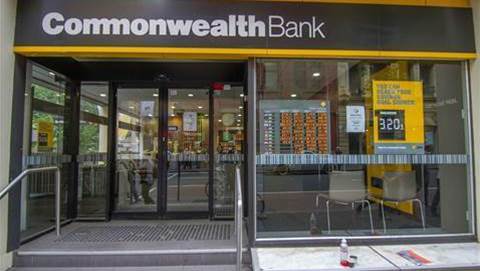A successful CRM migration to the cloud is encouraging the Commonwealth Bank to shift more SAP workloads off-premises.
Executive service owner of core banking Simon Davies told the Amazon Web Services Summit in Sydney that the bank will focus on its cloud journey, rather than continuing to divide its attention across two parallel systems.
“CRM is our vanguard deployment for a much larger SAP-to-cloud roadmap. We're focused on that right now,” he said.
“The challenge is that we've got a foot in both camps now, one on [premise] and one in public cloud, and different operating models for both.”
The “positive in isolation” CRM business case has convinced the bank to make the change, “because that will really drive the operational efficiencies that we're seeing through CRM at a much larger scale”.
Davies added CBA has also placed “a huge amount of focus” on growing its engineering workforce over the year as “a top-down priority”.
“The importance of this really can't be understated because what cloud really enables is engineering autonomy,” he explained.
“It's a toolkit that you can give to creative people to solve problems that previously were outside of their sphere of control.
“In turn, that engineering autonomy creates a flywheel effect of continuous innovation and improvement.”
CBA first began looking at DevOps and a migration to AWS in 2019 after realising it had three urgent projects at once: upgrading SAP, while migrating it to the public cloud, and upskilling its engineering workforce.
And, since “40 percent of the economy” relies on CBA, Davies said all of that had to be done “without breaking the Australian economy”.
“SAP on public cloud was never really a question of ‘if’ for me, but it was more a question of ‘when’,” he said.
“Our CEO Matt Comyn has publicly stated our goal of running 95 percent of our workloads on public cloud, so it really is a priority ... for all of us.”
However, such a massive change would be “effectively performing a heart transplant on the bank”.
Davies said the bank decided to start the move “a little bit at a time and continuously testing and learning”.
He also said the business case for moving CRM to AWS highlighted a number of benefits, including a 20 percent reduction in CBA’s infrastructure costs.
“The biggest benefit to me was not about CRM at all ... it was about building the cloud muscle and the technical blueprints that we'd continually refine with each successive migration, until ultimately it's ready to host one of the country's most critical workloads, which is CBA’s SAP banking system,” Davies said.
Despite the “very, very big goals, and a steep learning curve” all project commitments were achieved, he added.
A small engineering team comprised of CBA and Accenture engineers were also put to task to assist with the migration, combining “not just SAP skills but cloud and DevOps as well.”
Davies’ team decided it was best to “extract ourselves above pure [AWS] CloudFormation and adopt an approach of using Ansible to dynamically generate CloudFormation and then to orchestrate that build.”
In total, the bank’s journey to design and build “its target state SAP on AWS platform”, redesign its operating model and migrate the CRM took about 18 months.


























